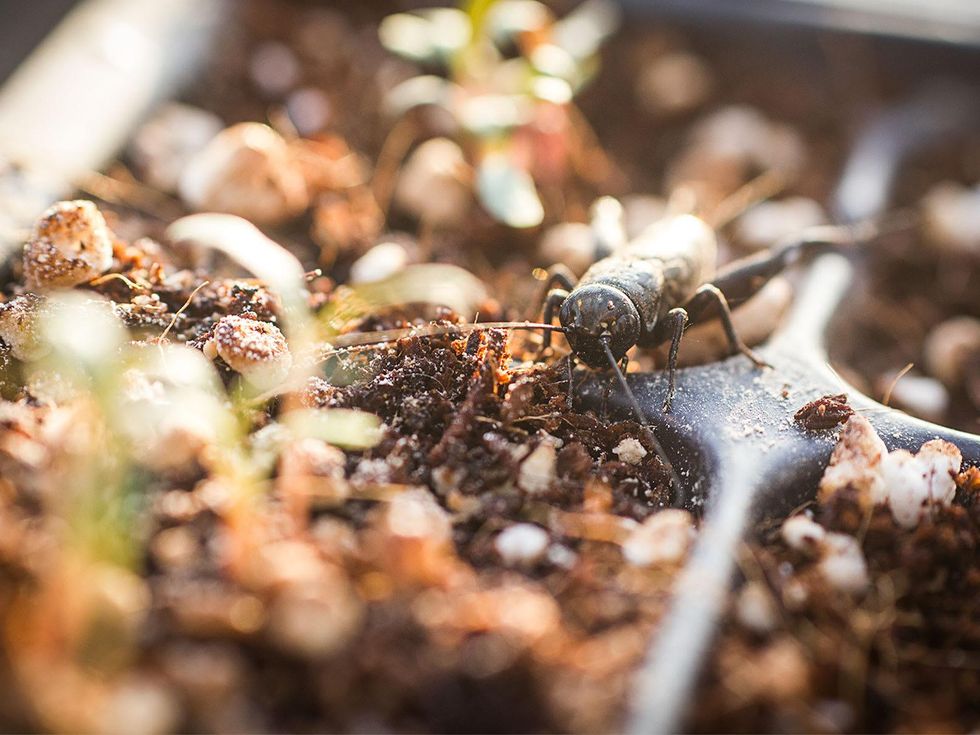The Farmer Diaries
Texas farmer welcomes invasion of epic Hitchcockian proportions
The morning of my home invasion in late December was cool but bright and sunny, with a haze that the sunshine hadn't completely dissipated.
The air was still and quiet outdoors. Inside and unaware that anything unusual was about to go down, I was at my computer, checking in to my social media accounts and enjoying my own version of an instant latte: freeze-dried coffee with sugar and soy milk.
The high-pitched calls of distant cowbirds were the only sound that broke through the quietness. It didn't arouse my suspicions; it's not an unusual sound to me, even though unlike the somber coo of a morning dove or the happy notes of a meadowlark, the cowbird's high-pitched call is less pleasant, more chatty as every bird speaks at the same time.
One night I heard the light sound of rain in the grass. But crickets, not raindrops, were the cause of this shower sound.
Their calls slowly grew louder, as if someone were turning up the volume gradually so that no one would notice the increase. Ten, maybe 15 minutes later, it was too loud to ignore. Still, I thought nothing about it until my wife, coming from another room, found where I was and silently motioned for me.
I followed her to the front of the house, sat on the edge of the bed, looked out the bedroom window that gave the best view of front yard and witnessed what had to be hundreds if not thousands of cowbirds rummaging through fallen leaves and dead grass blanketing the land.
Each bird was black with a sort of sheen, larger than a cardinal but smaller than a pigeon. Upturning the brown remains of last summer's lush, green lawn, each one searched the ground underneath, walked around and occasionally flapped their wings enough to fly a few feet in one direction or another.
Their number was uncountable as they stayed in constant motion, never ceasing to chat for a moment. They exhibited the opposite of stealth; their strategy was mass invasion. They were looking for something, and they seemed to be finding it.
We watched them for quite awhile. Then suddenly, this crowd of loud, bustling birds hushed. A split second later, at a cue only they could detect, they took off, every one of them at the exact same moment. The flutter of their wings beat the air and made a quick roar, sounding a little like everyone at a stadium clapping once simultaneously. In the air, they formed a black, billowing crowd of birds that stretched out and coiled back as it moved out of view.
What had instigated this brief invasion in the middle of winter wasn't obvious to me. As with so many things in nature, you just have to wait before the reason why something happens becomes evident, if ever. The birds had their reason. They were busy doing whatever they do, and I was just the ignorant bystander.
Crickets are not especially bothersome. They'll eat anything, including clothing, but they are far less destructive than grasshoppers.
Almost a month later, I'm now almost certain that the birds had come for my crickets. Beginning last August, the cricket population where I live ballooned.
In past years, I'd usually have to add cricket eradication to my household chores, trapping them as I found them, usually at night, but never more than just a couple every other day or so. Some I'd find behind the refrigerator, or in the bathroom, chirping loudly just when I needed to sleep. But this year, I could trap 20 each night, put them outside and find even more the next day in their place.
Outside, they were everywhere, rustling through the grass and giving my cats plenty to snack on. So dense was their population that one night, as I exited a back door, I thought it had started raining, as everywhere all at once I heard the light sound of rain in the grass. But crickets, not raindrops, were the cause of this shower sound.
Crickets are not especially bothersome. They'll eat anything, including clothing, but they are far less destructive than grasshoppers. In normal years, they hatch in the spring, mate in late summer, lay eggs in the fall and die out soon afterward. This year, conditions I can't put my finger on caused them to thrive and linger, even making it through several freezes, most likely by hiding out under fallen leaves when the weather turned dangerously cold for them.
Not only did they make it through most of the winter, but they also seemed to be increasing in number and showed no signs of letting up until the day the birds came. After my cowbird invasion, my nightly cricket trapping indoors was immediately more manageable until I now no longer have any to catch.
The few that holed up in my greenhouse have recently decimated the seeds that I started this month, just days after they sprouted. Crickets can indeed be counted as a garden pest. I rid the greenhouse of them and replanted, so control is simple enough.
The descent of these cowbirds was yet another instance of wildlife coming to my rescue, just like a population of skunks did two growing seasons ago. How the cowbirds single-handedly wiped out the cricket surplus in my yard reminds me yet again that we humans are in the middle of a huge world of animals, who have their own matters to tend. Just as we go off to work, put in our hours and return home, they too have their business to get to each day.
Getting a chance to see wildlife at work doesn't come along often, but when it does, I like watching it and learning what I can. More than that, though, I enjoy being completely mystified by wild creatures and witnessing them doing things that I can't make sense of, until something clicks one day and I finally understand.



